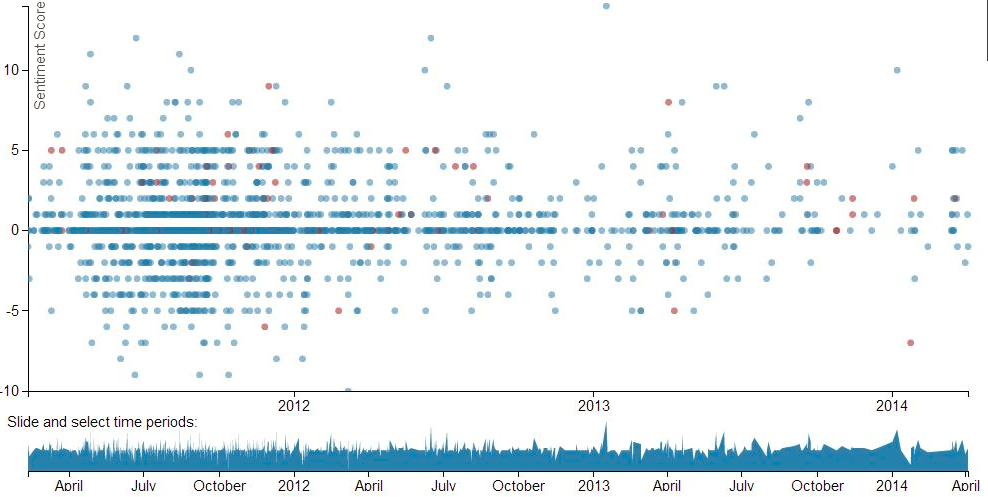
Contributors:
Chris K. Kim, Christopher Collins, Uta Hinrichs, Saif M. Mohammad
Based on word-colour associations from a comprehensive, crowdsourced lexicon, we present Lexichrome: a web application that explores the popular perception of relationships between English words and eleven basic colour terms using interactive visualization. Lexichrome provides three complementary visualizations: “Palette” presents the diversity of word-colour associations across the colour palette; “Words” reveals the colour associations of individual words using a dictionary-like interface; “Roget’s Thesaurus” uncovers colour association patterns in different semantic categories found in the thesaurus. Finally, our text editor allows users to compose their own texts and examine the resultant chromatic fingerprints throughout the process. We studied the utility of Lexichrome in a two-part qualitative user study with nine participants from various writing-intensive professions. We find that the presence of word-colour associations promotes awareness surrounding word choice, editorial decision, and audience reception, and introduces a variety of use cases, features, and future opportunities applicable to creative writing, corporate communication, and journalism.
Lexichrome is available for public access at http://lexichrome.com.
Publications
-
[pods name="publication" id="4179" template="Publication Template (list item)" shortcodes=1]
[pods name="publication" id="4341" template="Publication Template (list item)" shortcodes=1]



